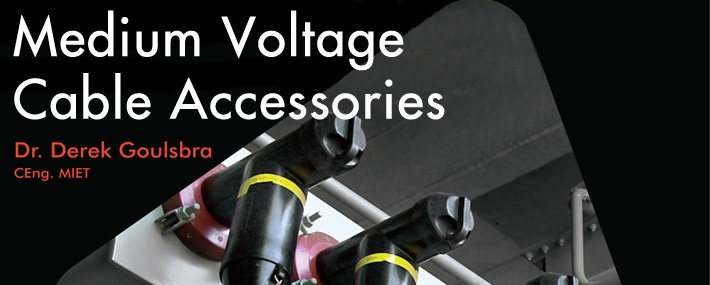Derek Goulsbra has been heavily involved in product development, failure analysis and engineering and jointer training for over thirty years. His new book, published by Nexans, is a detailed look at the Medium Voltage cable accessories which will be of value to jointers and engineers alike.
The book contains theoretical and practical appraisals on the workings and failure modes of a range of cabling accessories, including separable connectors, terminations, joints and associated components, as well as a practical consideration of cable preparation using present day techniques and tools prior to installing the accessory. Derek rounds the book up with a set of examples of failures which are presented with explanations of how these could have been avoided.
We have been lucky enough to get an early copy of the book and have featured the following teaser from chapters 1 and 2.
Chapter 1 – Introduction
The cables used for electrical distribution until the 1960’s almost exclusively used impregnated paper to insulate the conductors and were usually three core. A change to polymeric insulation then gradually gathered momentum and with it a change in the technology required for cable accessories, although, ironically some of the first dry terminations were developed for paper cable.
Early so-called dry type accessories for polymeric cables were usually of the pushon variety produced from elastomers and used on single core cable. The sound basic technology employed in the early days ensured that such products continue to be supplied today.
Heat shrinkable terminations were introduced in the late 1960’s and had the distinct advantage of being range taking and capable of use on both single and three core cables. Heat shrinkable joints were developed a few years later following the success of terminations and their suitability for both paper and polymeric cables resulted in a major revolution in cable accessory technology. This technology was a complete departure from the previous techniques, which required a cast iron box or lead sheath filled with oil or compound.
Cold shrink products made an appearance a little later and are now proving popular within the industry. The debate as to which system is preferable continues. It is fair to say that the heat shrinkable system is the most versatile and well known, but on single core polymeric cables in particular cold shrink systems are seen to have certain advantages. It is not the intention of the author to express a preference for any one system.
The use of screened elbows to terminate cables is now widely accepted and it will be shown later in the book that this system is theoretically superior to other systems for certain applications.
The early development of dry cable terminations concentrated on three core paper cables in the United Kingdom and single core polymeric cables in the United States of America. The accessories for paper cable were originally developed for paper belted cable rated at 11 kV using heat shrink technology; whilst for polymeric cable elastomeric push on systems were developed principally for 8, 15 and 25 kV.
As with many totally new concepts, it was shown that extensive laboratory development and testing is no substitute for field experience and many of the early terminations failed. The failures were generally not the result of poor installation, as each one was carefully monitored at this stage. The first heat shrinkable terminations developed for paper cable were pole top mounted and therefore exposed to the elements. The materials used were not themselves to blame and the formulation has changed little since that time. Several weak links in the chain were, however, present simple things such as inspection windows in cable lugs allowing water into the termination and the sealant used did not always exclude moisture. However, the major problem was the regular occurrence of breakdown between one core and the lead sheath.
Gradually, as the problems were identified, the weaknesses were eliminated and the products became reliable. At the present time dry type accessories, if installed correctly, will give satisfactory operation for the life of the system. Many terminations installed thirty years ago are still in service today.
As the practices of utilities have change and many of the jointers and engineers have retired, the need to make the installation of accessories less skill sensitive is the main driving force for the manufacturer. However, there are still some fundamental rules which should be obeyed to ensure satisfactory installation and hence trouble free service life.
A constant problem within the industry is the shortage of fully trained jointers to install the ever increasing variety of products in the market place.
The following chapters will examine how accessories work, why they can fail and good practices required ensuring trouble free service. It is hoped that there will be information of interest to engineers and jointers alike which will enable them to better understand the workings of cable accessories and hence reduce the potential for problems at a later stage.
If you found this article helpful or interesting, please share it!














